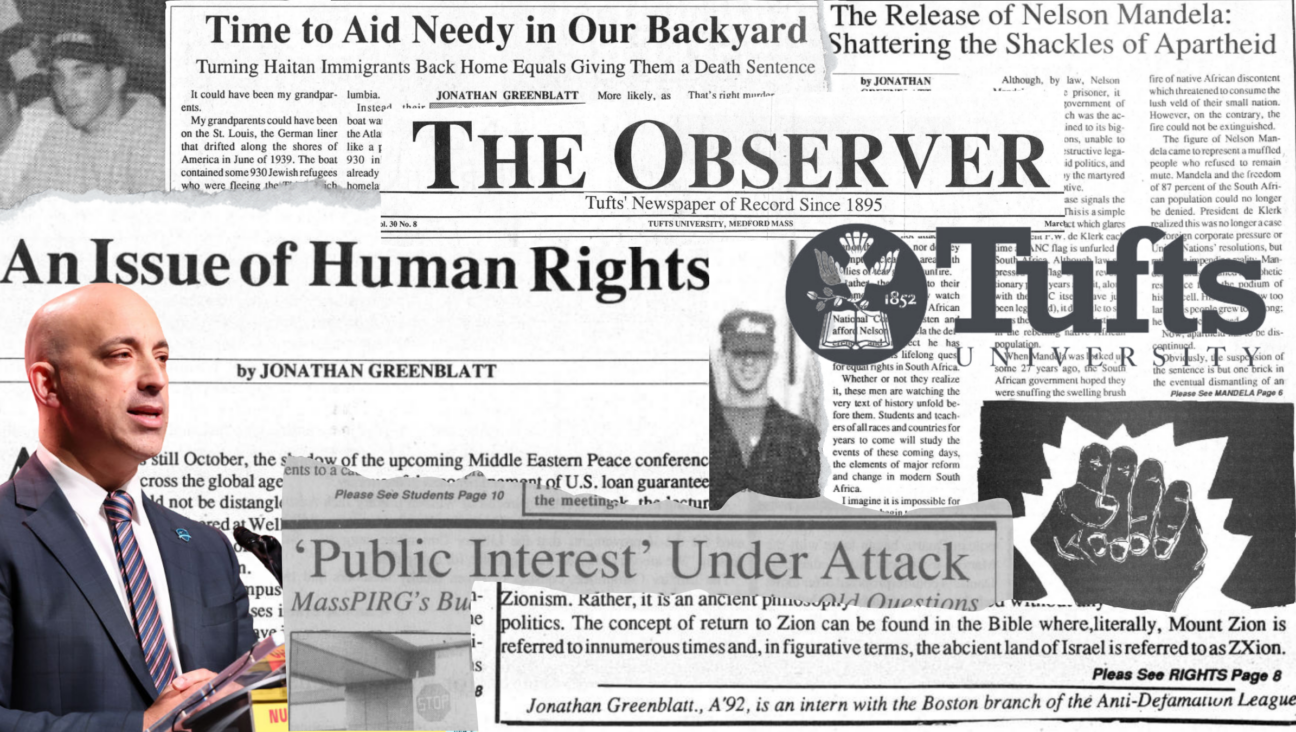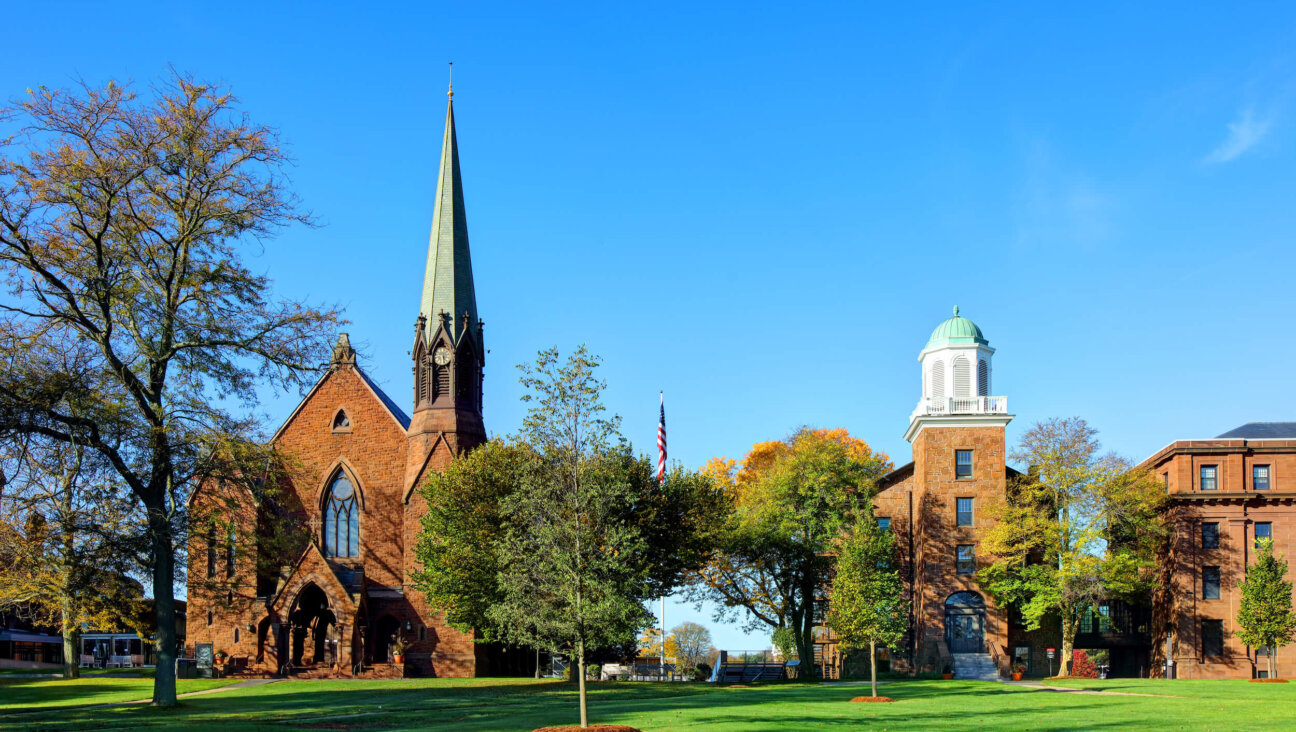Faigy Mayer’s Brave Life and Shocking Death

Faigy Mayer left the Belz community, a Hasidic enclave in Brooklyn’s Boro Park, in 2010. She was 24 years old. Five years later, having finally made the move to Manhattan, she was seemingly self-sufficient. She had an undergraduate degree from Touro College under her belt, and she was pursuing her master’s in accounting and computer science at Brooklyn College. She learned to code.
She networked her way into the city’s booming tech world and became CEO and founder of Appton, an app development company. Among her projects, Mayer was creating an app for homeless people, and another called Ex Hasid’s Guide to NYC. She toyed with the idea of relocating to Silicon Valley, in California, and finishing her master’s at Stanford, but the young entrepreneur could afford her own apartment in Manhattan and was proud to live alone.
Mayer loved her independence, and she was dating a little, too.
“She had one short relationship for the purpose of, ‘Hey, what is this that others speak of?’” Henny Kupferstein, her friend and confidante, told the Forward.

On paper, Mayer seemed like a success. She had an apartment, a good job and friends — just like any young New Yorker.
But emotionally she was still fragile. Even five years after leaving the ultra-Orthodox world, she lacked any enduring support from her family, friends said.
On July 20, as Manhattan cooled down from the day’s 90-degree heat, Mayer went alone to 230 Fifth in the Flatiron District, a popular rooftop bar best known for its nighttime view of the glittering, colorful Empire State Building. She took the elevator up 20 floors, stepped out and asked a bartender to point her in the direction of the east deck.
Minutes later, after weaving her way through a mish-mosh of happy-hour-goers and patrons closing their tabs before dinner, Mayer plunged off the side of the building, to her death.
Mayer’s suicide has left the ex-Hasid community reeling, with many trying to understand not only how her death came to be, but also the effect it had on other ex-Hasids in her shoes.
*
“I do not have any baby pics of myself,” Mayer posted to Facebook on March 26, in a plaintive plea to her estranged parents that they almost certainly never saw. “I don’t think it’s human to withhold your daughter’s photos from most of her life.”
When Mayer was growing up in Hasidic Boro Park, her mother worked as a baby sitter. Parents from the neighborhood would drop off their children at the Mayer home —sometimes 10 kids at a time.

Young Faigy was always around. Sometimes she’d forget to wear tights around the house, and in private she didn’t always dress the part of a “nice Jewish girl,” said Kupferstein, a former Hasid who attended the Bnos Belz Girls School with Mayer and belonged to her synagogue. Not only was Mayer’s mother ashamed of this behavior, but she also worried that Faigy might hurt her baby sitting business. The last thing Hasidic clients wanted was to have their children spend time around a child who looked or acted differently.
“Her mother said, ‘You can’t stay in this house, because you’re going to make me lose my customers, but you have no skills to support yourself, so we’re going to put you into a system,’” Kupferstein said.
Although it is difficult to confirm some details of Mayer’s childhood, the Forward spoke to several friends who corroborated key details. The Forward was unable to reach Mayer’s parents, Israel and Chava Mayer, for comment.
When Mayer was 16, her mother — who had no medical license or training — proclaimed that her daughter had bipolar disorder.
Mayer’s family allegedly had her hospitalized for several weeks, forcing her into a nearby psych ward to salvage the family’s reputation in the tight-knit community, Kupferstein said.
This story is not uncommon among ex-Hasids, explained Lani Santo, executive director of Footsteps, a New York-based organization that has helped 1,000 people transition out of the ultra-Orthodox community since the group opened its doors 12 years ago.
Santo said one common theme they hear about at Footsteps is that men and women who express a desire to leave Hasidism, or who show any lack of buy-in to communal expectations, are often labeled mentally ill.
“Sometimes that does lead to being forced by their families to see psychiatrists, and it certainly leads to medication when there’s not really an issue for which to be medicated. Now and again, it leads to forced hospitalizations,” Santo said.
Roughly three months later, when Mayer was finally deemed fit to leave the psych ward, she moved into supported housing for the mentally ill. She stayed for 18 months, according to Kupferstein, but was continually frightened to be living in close quarters with a male ex-convict.
“She kept trying to make up with the family and see if they’d take her in again,” Kupferstein said. “But they said no.”
Starting with her schooling — she knew Yiddish, English and basic math from grade school, and started undergrad at age 18 — Mayer began doing everything in her power to become self-sufficient. But even in this quest for independence, according to Kupferstein, she still had one foot in the door for a while, seesawing back and forth between living on her own and with friends, and trying to be reaccepted by her family and to move back into her childhood home. It wasn’t until Mayer was 23 that she discovered, from a relative who mentioned it in passing, that she could actually leave the community for good.
Earlier this year, she did escape — at least physically. But in her mind, it wasn’t quite that simple.
*
“Having been on the other side, I know I could never go back to my family’s place, no matter where I land,” Mayer wrote in June in a Google Doc created by Kupferstein as a forum for 25 current and former Hasids to share their stories. “Thanks to my new friends, I will never be discarded ever again.”
These friends — the new people in her life — were primarily from the tech world and from Footsteps. Mayer also started dating.
“She was so happy to have gone on a date with someone who wasn’t from the Jewish community,” another friend and ex-Hasid, Srully Stein, told the Forward. Mayer and Stein met at Footsteps in 2012. “She was open about wanting to settle down with someone who was very secular. She felt in some ways that she related to them more easily, and she was very excited about that,” Stein said.

Image by Facebook
So in theory, Mayer was doing well. She had these “new friends” in her life. But without her family’s blessing, she felt completely alone.
“The most challenging thing about this journey is isolation. People are cut off from their entire social safety net,” Santo said. “In the extremes, families are kicking people out, and in nonextremes, the families have a ‘Don’t ask, don’t tell,’ policy around this. They don’t want to know the full picture of what someone’s pursuing. Even when people are in touch with their families, there is a sense of not really being able to be their authentic selves.”
“A lot of depression comes from the cutting off of emotional and psychological support during the difficult journeys,” added Shulem Deen, an ex-Hasid who serves on the board of Footsteps and author of the book, ‘All Who Go Do Not Return,’ detailing his struggles in the highly insular Skverers community. Deen had met Mayer a number of times through mutual friends.
Deen had gotten the sense, particularly from her recent Facebook conversations, that Mayer felt helpless and bitter about her family shunning her and not giving her the support she needed.
A number of Mayer’s public Facebook posts are tagged with #HasidNoMore. In one post, from May 25, she appears to openly mock her parents and tznius, the modesty code of the ultra-Orthodox world.
In the photo, Mayer wears a bright-red shirt and a skirt with a large slit exposing her upper thigh. She gives a thumbs- up and is all smiles, and the caption reads, “This is my tznius shot of how I dress for my #hasidic parents.”
Another post, from March 26, marked Mayer’s five-year anniversary leaving the Hasidic community. “I’ve sort of lost all my family but I’ve made many amazing wonderful friends instead,” she wrote. “I hope to be an inspiration for others who leave, although given my story, I’m not sure I recommend it for everyone.”
*
Days after Mayer took her life, the entire ex-Hasid community in the New York area is in mourning: This loss affects much of the intimate, close-knit group, in which many have shared similar experiences.
Santo estimates that there are roughly 4,000 people who have physically left ultra-Orthodox communities in the New York metropolitan area. But there is no way to measure how many people have left in their minds, as Mayer had done well before she moved to Manhattan.
Some in this ex-Hasid community worry that the publicity around Mayer’s suicide may spur others to consider ending it all — especially those who have been separated from their children.
“Those without suicidal ideation are suddenly re-evaluating,” said Kupferstein, 37, who was excommunicated from the Belz community five years ago, rendered homeless for six months and forced to sever all ties with her four children. “Like, wait, Mayer wasn’t separated from her children. Her situation was a lot better than mine, and she jumped. So what business do I still have to keep going on?”
And for Stein, 23, dealing with friends who face struggles like Mayer’s has been far more trying than coming to terms with the tragedy itself.
“There are so many people in similar situations, and they take this really hard,” Stein said. “Dealing with them has been harder for me than anything else.”
This is not the first suicide in the community; in 2013, Deborah Tambor, who had left the Hasidic community in the upstate New York town of New Square, took her life after dealing with alienation from her children and a custody battle. And Deen, whose Hasidic children also refuse to have any kind of relationship with him, has lost five friends or acquaintances from the ex-Hasid community to suicide in the past six years.
“Unfortunately, the rate of suicide among those who leave is high,” Deen said. “I think that mental illness is such that if you’re a person dealing with these issues, too, when you see the support that people are showing to someone who killed him- or herself, it’s very dangerous. Someone else in a very desperate situation might see this as the only way to get that love and support. And this is what really worries me.”
But Kupferstein, who had been a shoulder for Mayer to lean on through the difficult transition and had Skyped with her from San Francisco as recently as six weeks ago, sees the suicide as Mayer’s way of opening up a much-needed dialogue about injustices inside the Hasidic community.
“This wasn’t about terminating her life,” Kupferstein said. “This was about opening up the world to awareness of what needs to be done.”
Among the most pressing issues Kupferstein said she and Mayer discussed on Skype was the importance of education for ex-Hasids so that they may become self-sufficient, and the unethical way in which ultra-Orthodoxy addresses nonconformity: through drugs and psychiatric programs.
“In the Hasidic world, if you have an issue with faith or if a child isn’t behaving exactly as they should in religious matters, they find you a therapist,” Deen said. “People are sent to mental health professionals for spiritual problems.”
*
Yet some fear that Mayer’s story has led people to reach unfair conclusions about Hasidism as a whole and to blame her death on the community she was born into.
Some Hasidic community leaders are emphasizing that one person’s tragic story does not mean that ultra-Orthodoxy, or stringent adherence to any religion, is bad.
“The finger pointing is so sad,” Avi Shafran, director of public affairs for Agudath Israel of America, said in an email to The Forward. “I don’t claim to know what demons plagued Faigy, but those who do, from places outside Orthodoxy, are making very subjective, biased accusations.”
He suggested that leaving the Hasidic community may have contributed to the depression and other problems that Mayer suffered from.
“Could it, though, have been a feeling of emptiness in her secular ‘new life,’ as successful as it seemed to be?” Shafran wrote. “The finger pointers don’t want to even consider that one.”
And the Hasidic community is mourning Mayer’s passing, too, he said.
“Most Orthodox Jews just mourn the loss of a precious Jewish soul, whatever may have driven her to suicide,” he wrote.
*
Mayer’s story is, on one level, specific to her. But the trauma she felt leaving her roots behind is something all too familiar in the larger ex-Hasid community. The feeling of being pushed so close to the edge during a taxing transition is something many ex-Hasids can relate to, and this most recent tragedy has sent a shockwave through the community — not only to those having trouble, but also to those who feel they’ve succeeded.
“It’s still being processed,” Deen said. “People are still dealing with the pain of it. But how do we now think about this, and what can we do to prevent this in the future? I’m definitely thinking about how we move forward.”

I hope you appreciated this article. Before you go, I’d like to ask you to please support the Forward’s award-winning journalism this Passover.
In this age of misinformation, our work is needed like never before. We report on the news that matters most to American Jews, driven by truth, not ideology.
At a time when newsrooms are closing or cutting back, the Forward has removed its paywall. That means for the first time in our 126-year history, Forward journalism is free to everyone, everywhere. With an ongoing war, rising antisemitism, and a flood of disinformation that may affect the upcoming election, we believe that free and open access to Jewish journalism is imperative.
Readers like you make it all possible. Right now, we’re in the middle of our Passover Pledge Drive and we still need 300 people to step up and make a gift to sustain our trustworthy, independent journalism.
Make a gift of any size and become a Forward member today. You’ll support our mission to tell the American Jewish story fully and fairly.
— Rachel Fishman Feddersen, Publisher and CEO
Join our mission to tell the Jewish story fully and fairly.
Only 300 more gifts needed by April 30






















